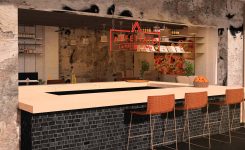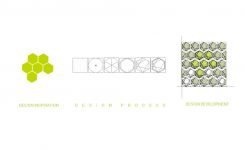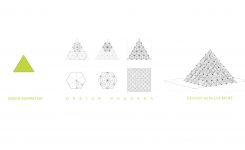Space Design
THE FUTURE OF ARCHITECTURE: Part 1 – Dynamic Architecture
What is now proved was once only imagined
-William Blake
Without imagination, there would be no progress. Architecture has a huge part to play in the direction mankind advances. It is responsible for defining the multitude of interactions and dialogues among people, their surroundings and the circumstances that govern life itself. It also determines the direction of our future – sometimes adapting and evolving, at other times, defying norms, and hopefully, revolutionising the way we live and experience life. It is important that architecture constantly learns, reviving and reversing the way we live to ensure not only preservation of life but its budding and, without creativity and imagination this would be impossible.
This series explores the future of architecture by looking at various examples covering existing and upcoming buildings, and those ideas currently under research and development.
In the first part of the series, Zeitgeist will look at the Da Vinci Tower of Dubai, a dynamic 80-storey skyscraper by David Fisher.
What is Dynamic Architecture?
David Fisher defines it as:
architecture as part of the environment, adjusting to the sun and the wind, to the view and to our momentary requirements
The term ‘Dynamic’ is a discipline within mechanics responsible for movement of objects with the effect of forces. Movement of a building is known as Dynamic Architecture and it involves a fourth dimension – time. The beauty of Dynamic Architecture is that the building’s form and shape are constantly changing, making it fluid, while exhibiting the building’s ability to adapt to change.
The Beginning

At the mere age of five, David Fisher’s mother use to take him to watch the Mediterranean sunset every evening – a beautiful gift, to be able have dinner with a magnificent view everyday. From a very young age, Fisher was enamored by time, the only constant that is ever-changing. The sunsets made him reflect on life, its movement; a powerful visual – the sun consumed by the water and how it happened everyday!
The Eureka Moment

One late afternoon in New York, David Fisher was visiting a friend who lived on the 51st floor of the Olympic Tower. His friend and owner of the apartment said “David, did you notice that you can see the East River and the Hudson river both from my apartment, and nobody else in this building has this view. I am the only one who has such a view.” David replied, “Why don’t we rotate the entire floor so that everybody gets a view.” He went back and worked on it, discovering that if he rotated each floor separately with different speeds in different directions then the building would change shape continuously, and was astounded with the results.
From this point on, Fisher’s designs changed with time, not just in shape, but also in functionality.
Everything is changing and everything is changeable in our lives
– David Fisher
The Manifestation of Fisher’s Dream – The Da Vinci Tower, Dubai
David Fisher named it The Da Vinci tower in honor of Leonardo Da Vinci, one of the greatest visionaries and inventors.
Because Leonardo Da Vinci did everything; he invented from the gill box to the helicopter, the submarine to the milling machine…Everything, but, he didn’t think about one – the rotating building.
– David Fisher

So Fisher created the first rotating tower, The Da Vinci Tower, a concept yet to be executed. Planned construction is anticipated to commence this year and is to be completed by 2020.
The enormous, towering building would have floors that rotate, completing a 360-degree rotation every 90 minutes. So there would be no need to pay a higher price for the view you wished for, as you would be able to change the view of your suite anytime you wanted, seeing the sunrise and the sunset from the same suite that you live in. The suites would enjoy all four cardinal directions covering the building. Further, sustainable innovation is also evident as the tower would be equipped with wind turbines in between each floor within a 2 feet gap that generates electricity for the tenants and supports the energy requirement for the rotation. The penthouse residents would be able to park their car at their apartments. Not only will the building sustain the energy requirement for itself, but it will be the first digital building actually producing energy, and supplying energy to a further seven buildings in its neighbourhood.
Construction Methodology

Traditional construction takes 2000 workers, 6 weeks for 1 floor and 30 months for the entire building whereas dynamic architecture will take 90 workers, 6 days for 1 floor and 18 months for the entire building. This method of construction technique is the future. Dynamic architecture is keeping up with time, and changing with time. There are studies being conducted on prefabricated modules for building vertical cities especially in war-affected areas, where workforce and construction time play a crucial role. The building will be made in a factory and shipped directly to the site. Further, the ability to produce energy not only for itself but for the surrounding buildings is the future.
Mechanism of the building
Construction
Our Reflections

When the sky’s not the limit but the beginning, you will never stop yourself from imagining.
Imagining the impossible will draw a lot of criticism, but translate that into your challenge and a concern that you must address. It should never become a hindrance but rather a design parameter.
And how do you go about it? Creativity and passion will help you ride the storm and conquer the impossible – sometimes you may reach for the stars but you might walk away with the moon instead – no complaints there! The key though, apart from all these attributes, is the application of a holistic approach to the problem when deriving a solution – the framework of Design Thinking, which I am proud to say is a core part of the Zeitgeist process.
Raoul Parekh
Founder & Chief – Design Management
with research support by
Mahek Khan
Designer – Space














